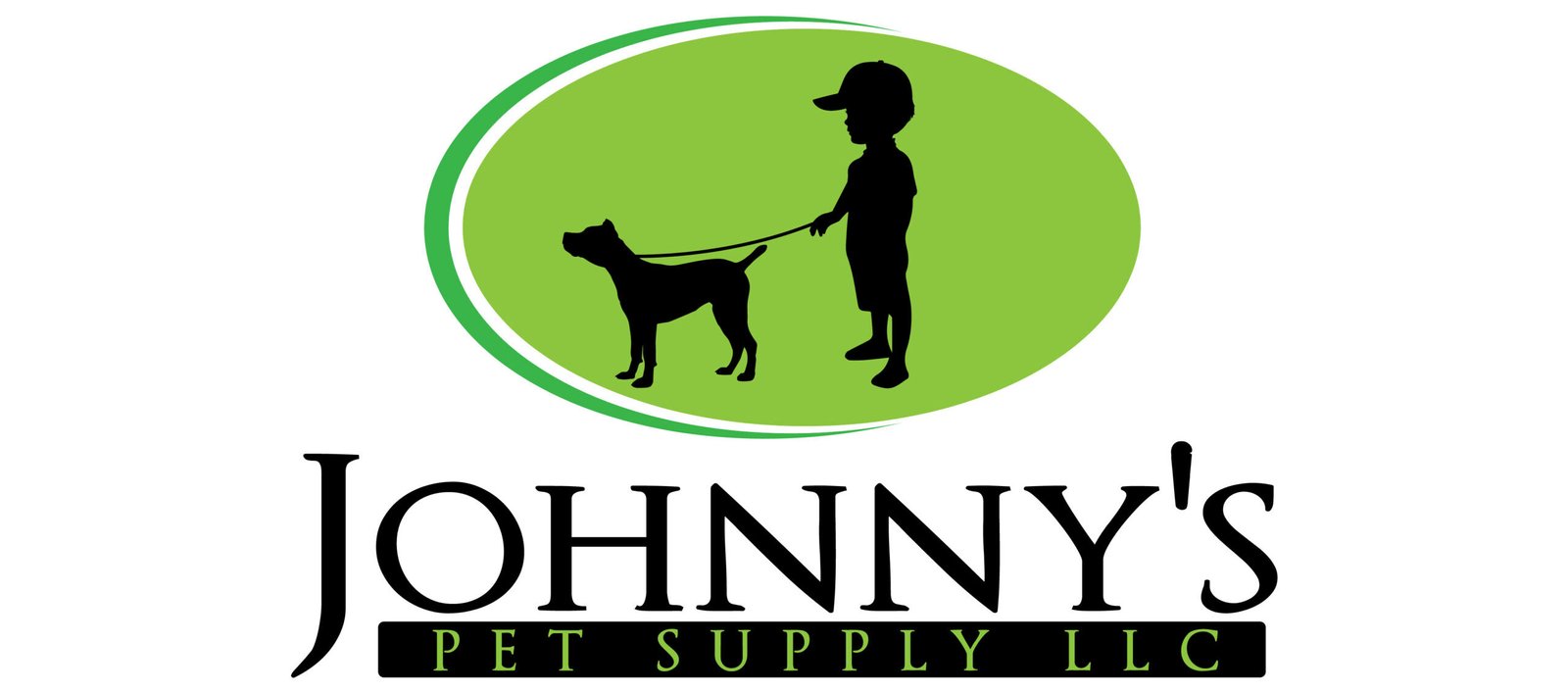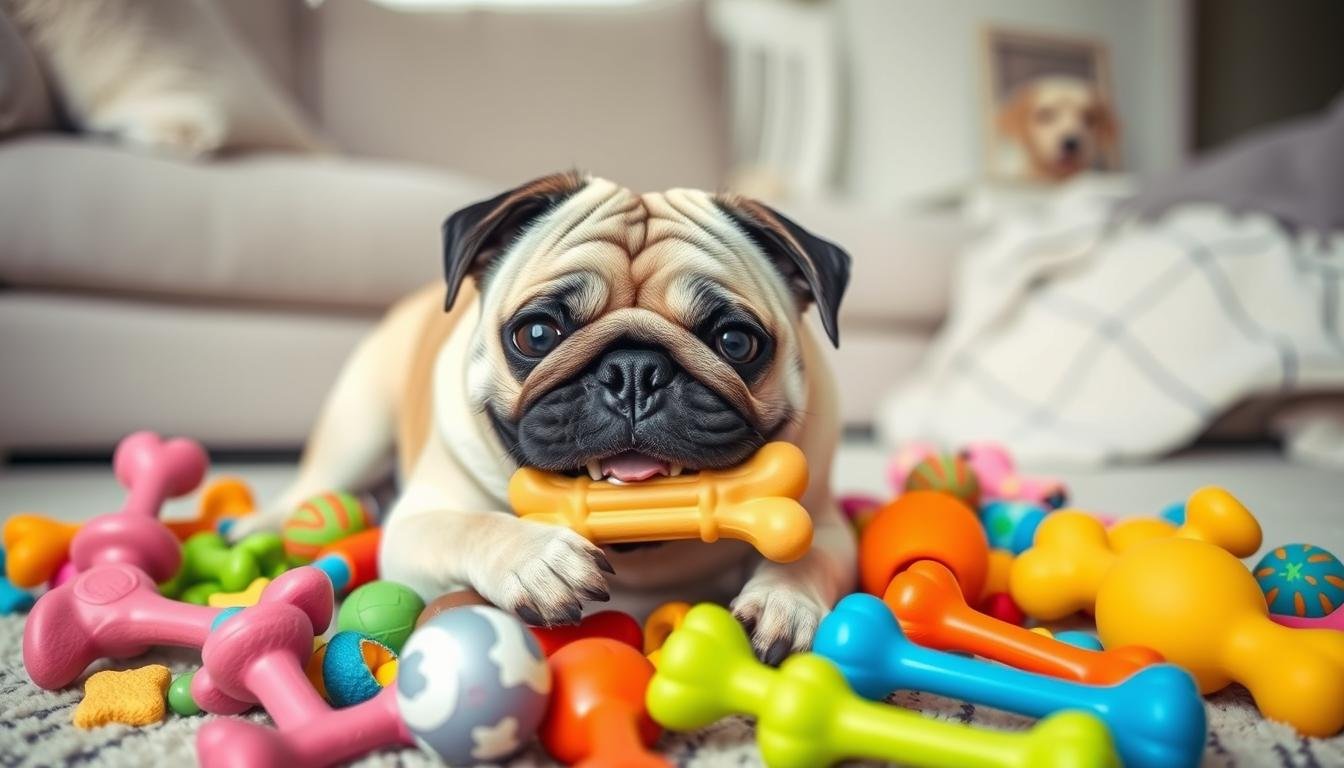How to avoid destructive chewing behavior in Pugs
Did you know that most dogs stop destructive chewing after about 18 months? As a Pug owner, this might surprise you. It shows how crucial it is to tackle this issue early on. Pugs, being playful and curious, often chew on things they shouldn’t. But, with the right steps, you can stop this and keep your Pug safe.
Chewing is natural for dogs, helping them keep their jaws strong and teeth clean. It also makes them feel good. You can’t stop this instinct, but you can guide it to safe chew toys and activities. This way, your Pug’s curiosity won’t harm your belongings.
In this guide, we’ll cover how to stop your Pug from chewing on things they shouldn’t. We’ll look at why they do it and how to train them. By the end, you’ll know how to keep your Pug happy, healthy, and well-behaved at home.
Understanding Why Pugs Chew Destructively
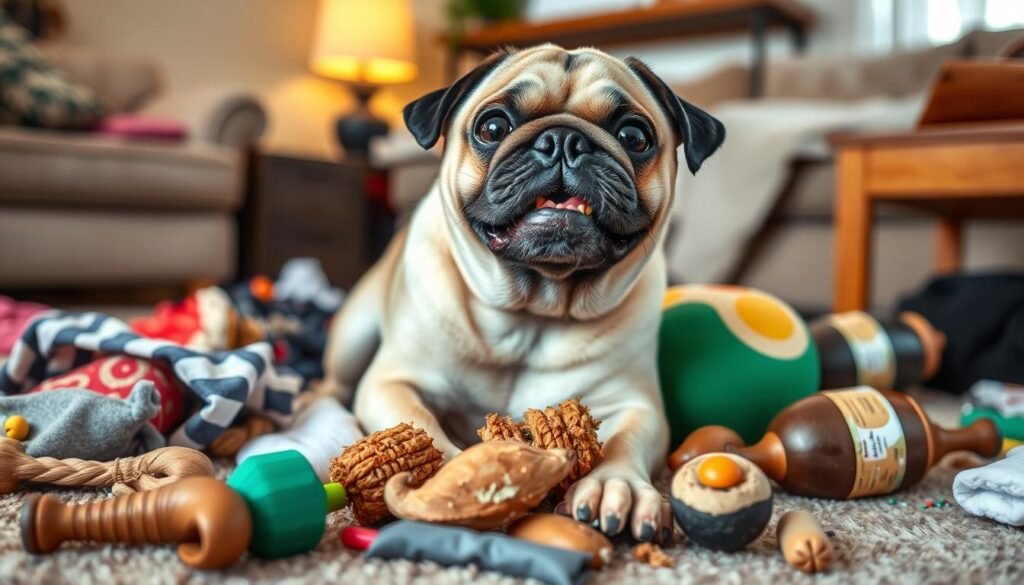
Pugs, like any dog breed, may chew destructively for many reasons. Knowing why they do this helps owners stop it and prevent it from happening again.
Play, Boredom, and/or Social Isolation
Pugs are playful and energetic. They chew as a way to play and explore. Without enough exercise or mental games, they chew to fight boredom. They also chew when left alone, feeling lonely.
Separation Anxiety
Separation anxiety makes Pugs chew destructively. They love their owners and feel anxious when left alone. Chewing helps them feel better.
Attention-Seeking Behavior
Owners might give attention when Pugs chew, which can make it worse. Pugs that don’t get praised for good behavior might chew to get attention.
Knowing why your Pug chews is key to fixing the problem. By finding out the cause, you can teach them better behavior.
Managing the Situation: Preventing Destructive Chewing

To stop Pugs from chewing things they shouldn’t, you need to act fast. Start by taking away things that might tempt them. Make sure your home is safe for your Pug by blocking off rooms with things they shouldn’t touch. Keep your shoes, jackets, and other items where your Pug can’t get to them.
Also, make sure nothing in your Pug’s reach can be chewed on. This will help keep your home safe from damage.
Remove Temptations and Puppy-Proof Your Home
To control your Pug’s chewing, you must make your home less tempting. Look at every room and take away anything your Pug might want to chew. This way, you can stop them from chewing on things they shouldn’t.
Provide Appropriate Chew Toys and Rotate Them
- Make sure your Pug always has 3 to 5 chew toys to keep them busy.
- Change the toys every week to keep things interesting and prevent boredom.
- Try edible dog chews and puzzle feeders to guide their chewing to the right things.
By following these steps, you can stop your Pug from chewing on things they shouldn’t. This will help keep your home safe and happy for both you and your Pug.
Dogs exhibiting destructive chewing behavior should be evaluated by a veterinarian to rule out medical issues such as dental problems, pain, metabolic, gastrointestinal, or skin conditions, or pica.
How to Avoid Destructive Chewing Behavior in Pugs
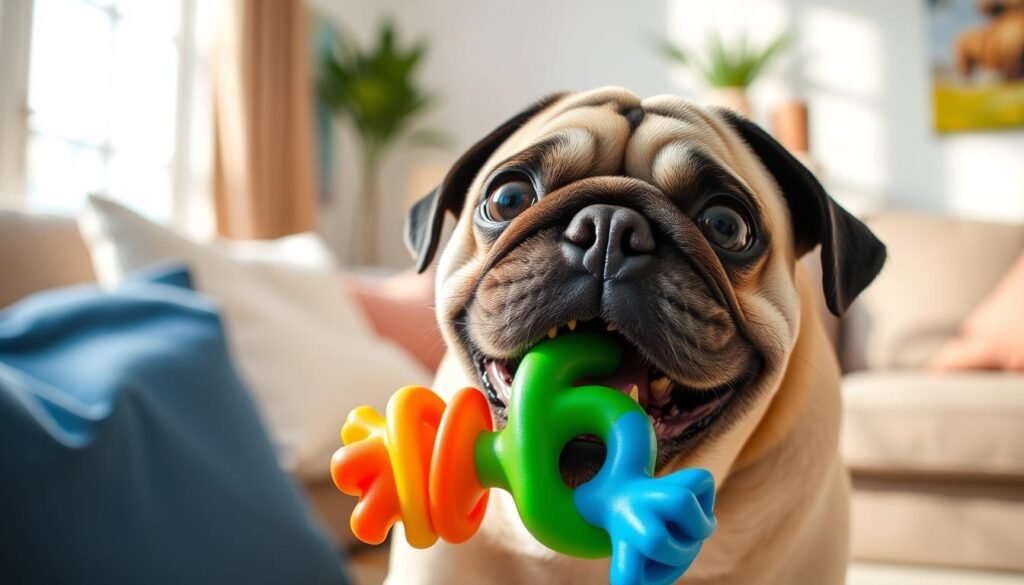
Pugs are playful and loving, but their chewing can be a problem. You can stop this with the right steps. Here’s how to keep your home safe from your Pug’s chewing.
First, manage your Pug’s environment by removing temptations. Make sure your home is safe by hiding things like furniture and cords. This stops your Pug from chewing on things they shouldn’t.
Give your Pug appropriate chew toys to keep them busy. Change these toys often to prevent boredom. Choose durable toys like Kong Classic or Zogoflex Tux to keep them happy.
Also, fix any reasons for chewing, like boredom or seeking attention. Make sure your Pug gets enough exercise and playtime. This helps prevent chewing problems.
Teaching your Pug to drop things and rewarding them is key. This teaches them good behavior and stops chewing.
With patience and the right steps, you can stop your Pug from chewing too much. This keeps your home safe and your Pug happy and healthy.
Exercise, Mental Stimulation, and Enrichment
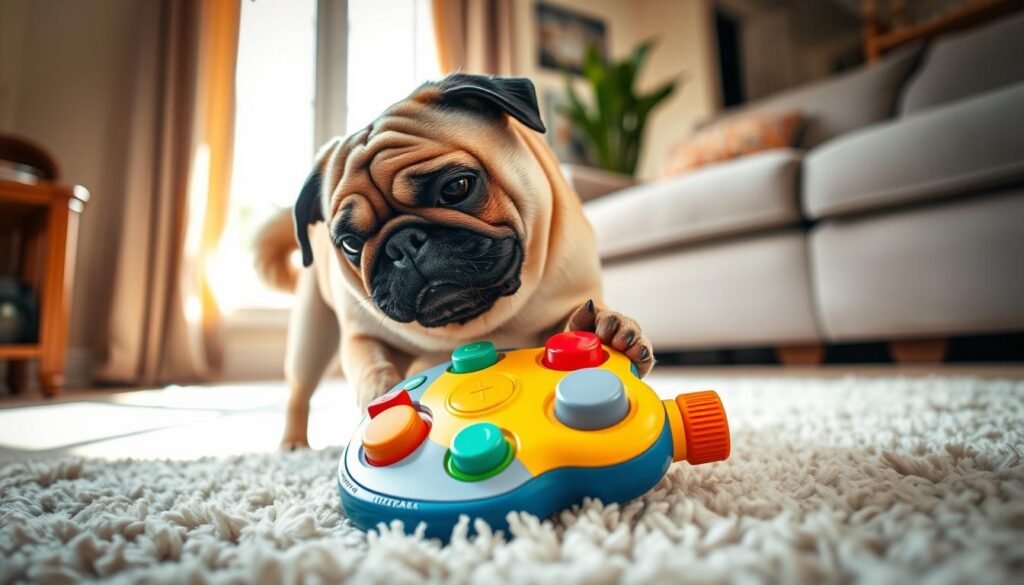
To stop your Pug from chewing things they shouldn’t, they need lots of exercise, mental games, and fun activities. Daily play and activities keep their mind and body busy.
Daily Exercise and Playtime
Make sure your Pug gets 30 minutes of play and exercise each day. This can be walks, fetch, or tug-of-war. Pugs, being high-energy, need lots of mental games to keep them happy.
Interactive Feeders and Puzzle Toys
Interactive feeders and puzzle toys can help keep your Pug from getting bored. They turn mealtime into a fun challenge. This keeps your Pug’s mind sharp and body active.
Change your Pug’s toys every week to keep things interesting. Puzzle toys, hide-and-seek, and scent walks are great for their mind. They help stop bad chewing habits.
“A tired dog is a good dog. Providing enough exercise and mental games is key to stopping bad chewing in Pugs.”
Addressing Anxiety and Fear-Related Chewing
If your Pug’s chewing is due to anxiety or fear, it’s key to tackle the root cause. Chewing can be a sign of separation anxiety, noise phobias, or stress. Team up with your vet or an animal behaviorist to create a plan. This might include behavior changes and, if needed, medication to ease your Pug’s anxiety.
It’s estimated that 5 million to 15 million dogs in the U.S. face noise anxiety. Breeds like Collies, Golden Retrievers, and German Shepherds are more likely to have it. Symptoms can range from shaking to destructive chewing, digging, or scratching.
Techniques like desensitization and pressure wraps can help with noise anxiety. Over-the-counter meds like Benadryl might be used, but always check with a vet first. Natural options, like pheromones and calming supplements, are also good alternatives.
“Addressing anxiety and fear-related chewing in Pugs is crucial for their well-being and preventing destructive behaviors.”
Separation anxiety is another big reason for Pugs’ chewing. About 14% of dogs deal with it. Training, socialization, and keeping your Pug busy and active can help.
It’s vital to address anxiety and fear chewing in Pugs for their happiness and to stop bad habits. Work with your vet or animal behaviorist to find the best way to meet your Pug’s needs.
The Role of Proper Training and Positive Reinforcement
Training and positive reinforcement are key to stopping Pugs from chewing on things they shouldn’t. Teaching your Pug to listen to commands like “leave it” and “drop it” can stop them from chewing on things they shouldn’t. When your Pug chews on the right toys, reward them to encourage good behavior. Never punish your Pug for chewing on the wrong things. This can make things worse and hurt your relationship.
Positive reinforcement works well for Pugs, who don’t like being punished. By rewarding good behavior, you can teach your Pug to chew on the right things. Give treats, praise, or playtime when they chew on approved toys. This helps them learn to chew on the right things.
- Teach your Pug the “leave it” and “drop it” commands to interrupt unwanted chewing
- Reward your Pug with treats, praise, or playtime when they chew on appropriate toys
- Avoid punishing your Pug after the fact, as this can worsen the problem and damage your bond
- Implement positive reinforcement training methods to shape your Pug’s chewing habits
With patience and consistency, you can teach your Pug not to chew on things they shouldn’t. Focus on rewarding good behavior. This way, you can stop unwanted chewing and build a strong bond with your Pug.
Seeking Professional Help for Persistent Chewing Issues
If your Pug keeps chewing things up, it’s time to get help. Your vet can check for health problems and help with behavior issues. A certified animal behaviorist or trainer can create a plan to change your Pug’s chewing habits.
Don’t wait to ask for help with your Pug’s Pug chewing issues. With the right help, you can correct destructive chewing in Pugs and train Pugs not to chew destructively. This will help stop destructive chew habits in Pugs.
A professional can find out why your Pug is chewing and offer specific solutions. Working with an expert, you can solve your Pug’s chewing problems. Together, you can make a plan to stop destructive chew habits in Pugs.
